Amid the pandemic, a writer crosses the globe to be with her family in Delhi for Diwali
My father is 95 years old. His memory fails him. “Eat,” Papa urges, reaching into a tin of biscuits and foraging for the type I like best. “Eat, Ma, dunk this one into your tea.” He extends a round Marie biscuit, and I am 5 years old again.
It is the fifth biscuit he has handed me this morning, but I take it from his gnarled yet steady fingers. His offering of food and my acceptance of it is the vocabulary of love.

I have flown 7,500 miles from Chicago, where I have lived for the past 11 years. I left my home in Delhi over three decades ago and have worked in many parts of the world, but the U.S., where I came to study for a doctoral degree, has become home.
Now I am in Delhi again, for Bhai Phota, which is a part of the holiday of Diwali. For Bengali families like mine, Bhai Phota is an important cultural festival, one that celebrates the bonds between siblings. In the holiday’s ritual, a sister wards off the death of her brother, just as Jamuna does for Jamdoot (the God of Death, and therefore the most immortal brother of them all) in Hindu scripture. I have not missed Bhai Phota for the past five years, not since Amit, the eldest of my three brothers, suffered a traumatic brain injury after a bicycling accident in 2016.
I am the only sister, the only one who can perform the ritual that ensures the longevity of my brothers, and after Amit’s accident, Bhai Phota’s protective rite has been nonnegotiable for me. Even during the pandemic, when the journey required multiple COVID tests and a weeklong quarantine in a separate apartment, it was important not to miss this.
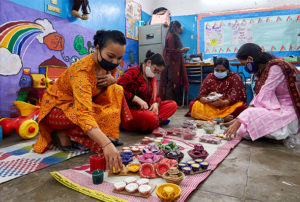
Whenever I call from Chicago, Papa asks, “When are you coming again?” Watching my biscuit dissolve into the tea, I know this will be one of the last meals I share with him. But even more than for him and my 85-year-old mother, I have come to Delhi for my brothers.
My childhood was filled with stories from Thakumar Jhuli, a wildly popular collection of Bengali folklore by Dakshinaranjan Mitra Majumdar that was first published in 1907. My favorite story features Kiranmala, a princess who undertakes a long and dangerous journey to find her missing brothers Arun and Barun, both of whom have been turned to stone by an evil spell. When she reaches the site where her brothers lie enchanted, she sprinkles magic water on multiple rocks, transforming them into living people—including the two petrified princes.
I grew up believing a sister’s love can bring back to consciousness that which lies inert.
So, while I am in Delhi, I read to Amit every day. He is under around-the-clock care from a skilled nursing staff. When he sees me, he raises a thumb to say yes or a forefinger to say no. That is his only mode of communication.
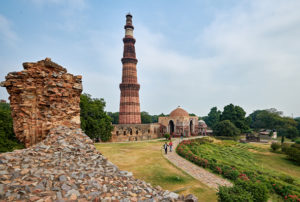
Before the accident, he had one of the finest brains in the country. He was a professor of computer science at the Indian Institute of Technology Kanpur. After the accident, the best neurologists and neurosurgeons in Delhi and Mumbai and Chennai all rallied to save his precious brain. But the doctors compared Amit’s brain scan to that of the Formula One champion Michael Schumacher following his skiing accident. Pray for a miracle, Amit’s neurosurgeon advised.
Every year, especially at Bhai Phota, I do just that.
Papa is sprightly as we walk out to the balcony, where the golden light of the sun is sieved through the leaves of the mango tree that shaded my girlhood. When my father bought this plot of land, it was in an undesirable part of Delhi called the East Pakistan Displaced Persons (EPDP) Colony. Wolves bayed at night. His family had abandoned their ancestral home in what is now Bangladesh following the partition of India; his widowed mother faced a life of penury in newly independent India, with seven children to feed, and he left home at 14 to make a living.
A pejorative term, EPDP differentiated the wretched refuse of the partition from the families who had lived in Delhi for generations. Now this area is named Chittaranjan Park, and it falls within upscale South Delhi. Yet Chittaranjan Park remains at heart a Bengali para, a communal enclave where we know our neighbors and Bengali is the default language of the shopkeepers.
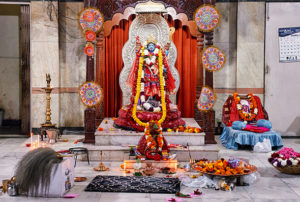
My elder brother, Sumit, who lives with his family just three houses away, joins us on the porch. Sumit, who once served as a colonel in the Indian army, had been working at a tech firm, but after Amit’s accident he resigned from his corporate position to manage the complex medical situation surrounding Amit and my aging parents. Unlike our diasporic siblings (my younger brother, Atish, lives in Boston with his young family; he’s unable to be here this year), he is always there, for festivals and emergencies alike.
Despite the smog, the wintry sunshine is magic. It carries the heft of years of sitting on charpoys, breaking hot peanut shells with our teeth and sipping chai; the fragrance of kochuri made with tender winter peas and spiced potatoes eaten on an open balcony, just as we are doing today. Fat crows flit from the ancient bel tree to the shajna, old childhood friends.
Sumit and I discuss the menu for Bhai Phota. In our family, it is always beer and biryani; the only thing we have to decide is where to order the food from. Hindutva politics, which has grown increasingly fanatical, seeks to enforce vegetarianism as the default way to celebrate Hinduism, but that movement is steeped in North Indian traditions, foreign to Bengalis. We refuse to compromise on Paet Puja (literally translated as the worship of the stomach) as an important way to honor our heritage. We decide on Kolkata mutton biryani—with chunks of potato and boiled egg—and chicken kebabs.
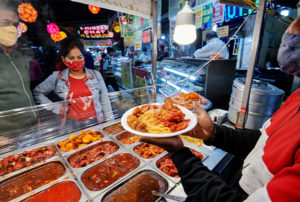
Papa approves of our menu decisions. He still enjoys his beer; at his age, it is available so rarely.
This is how our festival calendar unfolds: First comes Choti Diwali, Little Diwali. For Bengalis, Choti Diwali is also Bhoot Chaturdashi, when the benign 14 generations of ancestor spirits roam the earth. We light 14 lamps at the corners of our homes, illuminating dark nooks and crannies to attract ancestral blessings. The next night is Diwali, when all homes in Delhi blaze with lights. On Diwali night, Bengalis also celebrate Kali Puja, chanting prayers to the goddess Kali throughout the night. Then, two days after Diwali night, in the morning, we have Bhai Phota, to celebrate our bond with our siblings.
Diwali is still a week away when Tinni, Sumit’s 24-year-old daughter and my parents’ only granddaughter, joins me in attending an open-air weekend craft bazaar at the Sunder Nursery. Tinni is never far from the family Labrador, Bhombol Bumble, who also tags along. This year, we expect the festivities to be less boisterous, as more people are staying within their homes, but on Diwali all houses must blaze with lights so that the goddess of plenty, Lakshmi, finds her path clearly lit. So we’re at the bazaar to buy diyas, traditional terra-cotta lamps that are fragile but flicker all night with the prettiest of lights. Bhombol ignores us as we shop, eating whatever is proffered and falling into a satiated sleep at the stall that sells canine treats.
The Sunder Nursery complex is an archaeological site flanked by the stunning Humayun’s Tomb and the historic Purana Qila. The old coexists with the new; amid modern greenhouses are scattered the remains of Mughal structures, the names tripping off my tongue like poetry—Lakkarwala Burj, Sunder Burj, Sunderwala Mahal. We pause to admire the curlicues of Quranic inscriptions. Sandstone lattice screens, open to the sun, light our way.
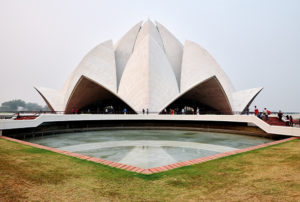
We explore as much as we can, but the grounds—all 70 acres—are too expansive to cover entirely. The Archaeological Society of India has teamed up with the Aga Khan Trust for Culture to beautifully restore and preserve the site. When earthworks revealed a 16th-century lotus pond that would have stood within the garden of the Sunder Burj and Sunderwala Mahal, they rebuilt it so that the lotuses once again bloom in the pond outside. Inside, on the ornamental domed ceiling, vivid depictions of red and blue flowers burst from the stonework, taking our breath away.
The day before Diwali, the streets are a riot of color from garlands of flowers, religious figurines, and handcarts teetering with plump fruits. In the Bengali fish markets, rows of sweet river fish—ilish and rui and pabda—jostle against the pomfret and glistening king prawns. This is the time for feasting.
I make a last dash for diyas at Project Why, which sells the lamps to support its mission to educate and feed street children in Delhi. The intrepid teachers are currently teaching the children in groups of five at a time, so that they can keep learning—and having a daily meal—despite coming from homes where internet connections and computers are an impossibility. The diyas the teachers make are artistic and cheerful: Blues and yellows and reds and greens and purples merge with sequins and glitter, and everything is heaped delightfully on bright trays like confectionery. It’s hard to stop buying.
Back home, as evening comes, we dress in saris and light 14 lamps around the house. I light five lamps outside Amit’s bedroom, one for every year since the accident, inviting the ancestral spirits to come into, and spread, the light.
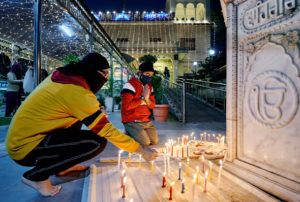
On Diwali night, the city switches on all its lights. Even the Sikh gurdwaras and Muslim mosques are festooned with twinkling fairy blubs. Flower-patterned rangolis adorn homes, and Bengali porches welcome visitors with white alpona designs—flowers, animals, and geometric patterns drawn with rice flour that will feed ants for days to come.
The sonorous conch shell and ringing bells of the Kali Puja issue all night from the main Kali temple in Chittaranjan Park. The temple rises from a hill in a blaze of lights, a huge white lotus flower incandescent at the entrance. The roof shines red and yellow and the terra-cotta friezes on the walls glow, illuminating dancing gods and cavorting lovers and grazing cattle—a world where there is peace and beauty at every turn.
My mother wakes me early on Bhai Phota morning to make preparations. There is the dhan durba (trident-shaped grass and unhusked rice) to be gathered, the bell metal tray and copper lamp to be polished. Tinni arranges sweets around the lamp, fits in the dhan durba. I hold a mango leaf smeared with ghee over an open flame, and the fire makes a smoky kajal, a traditional kohl. We grind sandalwood paste and collect it in a tiny stone bowl, then daub vermilion paste on another leaf.
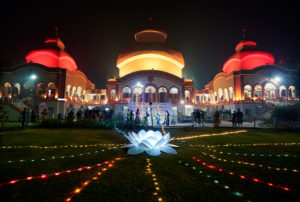
Why has Bhai Phota brought me back to Delhi every year, to chant a mantra and put a mark of kajal-sandalwood-vermilion on my brothers’ foreheads? I understand that words don’t confer immortality—although, as a writer, I know of nothing else that so effectively does—but I choose to believe that there is magic in the brass lamplight, the smoky blackness from ghee on the underside of a mango leaf, the pastes we grind, the flowers plucked fresh, and the auspicious grass and grain.
Most of all, there is magic in the unwavering love that makes us all come together to pray for wellness, if not immortality. Our mantra goes:
Bhaier kapale dilam phonta,
Jamuna dae Jomre phonta,
Ami di amar bhaike phonta,
Jamduare porlo kanta.
I put a phota on my brother’s forehead,
Just as Jamuna gives a phota to Jamdoot,
I give a phota to my brother,
And bar the door to death.
The six of us dress in new clothes, except for Bhombol Bumble (who Papa has to shoo away from the plates of food). Amit gives a big thumbs-up when he sees everyone milling around. I give a phota to Amit, then one to Sumit, and there is much levity as my parents argue about the words in the mantra, and I forget the order of the lines. Papa gets a phota from Tinni, then Bhombol gets one too.
I feed my brothers sweets from the prayer tray, to sweeten their lives. I am careful to feed Amit only a smidgen, for he chokes easily. I dip a finger into my beer and place a drop on his tongue. He swallows.
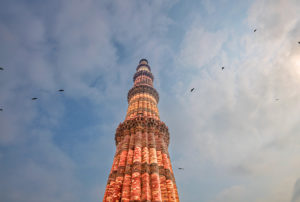
The biryani follows, the recipe dating to when the Nawab of Awadh was dethroned in the 19th century and poverty forced the cook to add eggs and potatoes to biryani meat and rice. Lovers of Hyderabadi and Lucknowi biryani shudder at the blasphemy of potatoes, but Kolkata biryani is sublime, and we eat every last bite.
Our celebration is communal (although the pandemic keeps the gathering small), for Bhai Phota embraces kin that are not related by blood. I address everyone as Bhaiya, “my brother”: the male nurses who care for Amit night and day, the attendants who help them, the house helpers who look after my parents. We feast on the savory and finish with three kinds of sweet, including a yogurt, mishti doi, sweetened with a rare date palm jaggery that’s available only in winter.
I soak in every minute with my family—especially with Sumit. I see how he manages the delicate ballet of staying upbeat in the face of a tragedy that he can’t fly away from, ever. The miracle is in the depth of our love for each other, for our parents, and for Amit. We squeeze each other tight, not letting go. Being able to do this, in this year of losses and heartbreaks, makes this holiday all the more precious.
Where to Stay
The colonial-era Imperial Hotel opened its doors in 1936; discussions on the partition of India and creation of Pakistan were held within its grand halls and atmospheric bar. The Imperial is conveniently situated in Janpath—the tourist heart of New Delhi—but feels like a portal into an older, slower time, with its turbaned guards in cummerbunds and its priceless art collection from the 1930s, which documents the British Raj.
From $175, theimperialindia.com
What to Eat
Perched on a beautiful rooftop in South Delhi, Fig & Maple is known for its Sunday brunch but serves excellent contemporary cuisine all week, as chef Radhika Khandelwal champions sustainable ingredients and zero-waste cooking. Try the signature salad with mustard and figs, the gondhoraj– and lemongrass-infused gin, and the Axone smoked pork.
For a more down-to-earth experience, try a langar (community meal) at the Gurdwara Bangla Sahib. This Sikh temple, not far from Connaught Place, serves free plates of curry, dal, and chapati to tens of thousands of people every day of the year, and the meal is extra-special during Diwali.
What to Do
This year, Diwali falls on November 4, and there are a number of ways to take part in the festival if you’re in Delhi. Nearly every place of worship will be lit up, but some of the more spectacular light displays are around Lutyens’ Delhi and Connaught Place. To dig a little deeper, try to catch live classical music and dance at a venue such as the India Habitat Centre or Kamani Auditorium.
Of course, the best way to celebrate is to get invited into an Indian home. Expect to gamble over teen patti, a popular card game, deep into the night; remember, if Lakshmi brings you luck on Diwali, she will not abandon you in the coming year.
What to Buy
Looking for a Diwali souvenir? The Dilli Haatmarket and Dastkar Bazaar, both in South Delhi, showcase traditional crafts, including woven fabrics, patachitra paintings, and artisanal pottery from all over India. If you want to shop with a social conscience, pick up keepsakes at the Blind School Diwali Mela, which is run by the Blind Relief Association and is found near the Sunder Nursery complex, or Project Why in Govindpuri, which helps fund educational opportunities for underprivileged children.
Next Up: Three Perfect Days: Delhi
